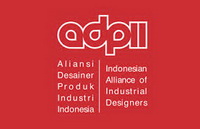Persepsi pengunjung terhadap kualitas wayfinding sebagai elemen interior di Poliklinik RSIA Limijati, Bandung
Abstract
Patient and visitor’s satisfaction is an indicator of the healthcare facility’s quality in hospital. One of the healthcare facilities in hospital is polyclinic area. Indonesia is committed to building a manufacturing industry that is globally competitive through accelerating the implementation of Industry 4.0. In this industrial revolution, there was a big leap where information and communication technology was fully utilized. The health industry also experienced this impact. The digital era in health facilities is a challenge to be better at providing health services to the community. Patient and visitor of health facility are those who are not familiar with the hospital environment and often have poor emotional and physical conditions. Therefore, it required a physical environment that can support the convenience of visitors, especially in the ease of finding the destination. One of the parameters of “design that cares” is to providing convenience for patient and visitor in finding purpose (wayfinding) and oriented in the building. This study is in the form of library research and uses descriptive analysis methods that take samples of patients and visitors of the RSIA Limijati Polyclinic, Bandung. Data were collected by accidental sampling technique through interview, observation, and questionnaire. This research is expected to provide solution to wayfinding design problem related to hospital user’s characteristics, especially polyclinic area.
Key words: polyclinic, orientation, wayfinding
Full Text:
PDFReferences
Berger, Craig. (2005). Wayfinding, Designing and Implementing Graphic Navigational System. Switzerland: Roto Vision
Carpman, J.R. and Grant, M.A. (1993). Design That Cares: Planning Health Facilities for Patients and Visitors. Chicago: American Hospital Publishing.
Follis, dkk. 1979. Architectural Signing and Graphies. New York; Whitney Library of Design.
Gibson, David. (2009). Wayfinding Handbook: Information Design for Public Places. New York: Princeton Architectural Press
Golledge, R. G. (Ed.). (1999). Wayfinding behavior: Cognitive mapping and other spatial processes. Baltimore: John Hopkins University Press.
Mayangsari, Sriti. (2003). Peran warna pada interior rumah sakit berwawasan ‘healing environment’ terhadap proses penyembuhan pasien. Dimensi interior Vol. 1 No. 2, Desember 2003: 141-146.
Passini, R. (1984). Wayfinding in Architecture, Environmental Design Series Volume 4. New York: Van Nostrand Reinhold.
---------, R. (1992). Wayfinding in Architecture. New York: Van Nostrand Reinhold.
Prasetya, R. D., Laedpriwan, S., & Wanichakorn, A. (2014). Visiting patient activity at patient room in the perspective of Thai people. Journal of ASEAN Research in Arts and Design, 1(2), 26–34.
Tanuwidjaja, Gunawan. (2012). Tinjauan Pustaka Wayfinding & Orientation System
Ulrich, R. S. (1991). Effects of interior design on wellness: theory and recent scientific research. Journal of Health Care Interior Design : Proceedings from the ... Symposium on Health Care Interior Design. Symposium on Health Care Interior Design, 3, 97–109. Retrieved from http://www.ncbi.nlm.nih.gov/pubmed/10123973
DOI: https://doi.org/10.24821/productum.v3i5.2202
Refbacks
- There are currently no refbacks.
p-ISSN 2477-7900 | e-ISSN 2579-7328

This work is licensed under a Creative Commons Attribution 4.0 International License.
Like & Follow Us










